
Tables set up at Hunt Camp where attendees can work on outdoor skills like using game calls and traps. All photos courtesy of the author.


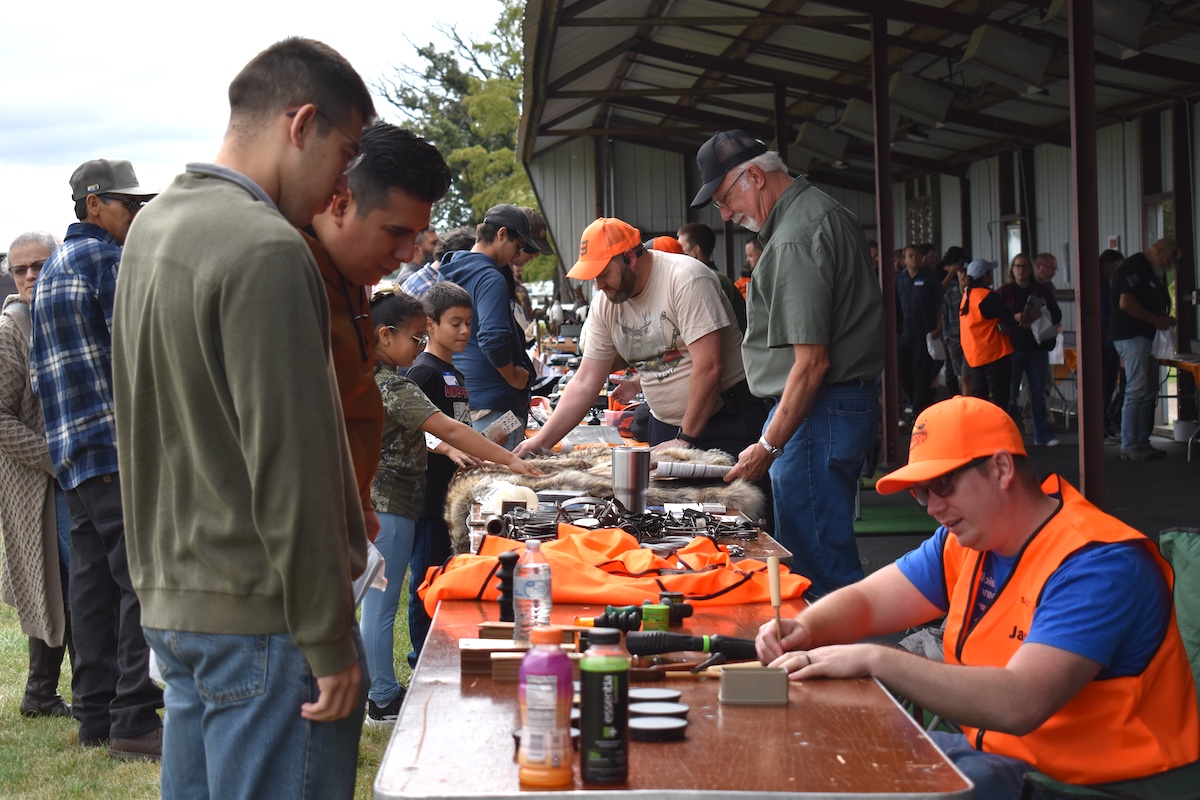
Tables set up at Hunt Camp where attendees can work on outdoor skills like using game calls and traps. All photos courtesy of the author.
When I was a kid, I remember my grandpa telling me about how hunting had changed in his lifetime. Between puffs off his pipe, he told me about when he was my age quail were everywhere. If someone saw a deer track though, it was the talk of the town.
According to the National Survey of Hunting and Fishing, in 1960 about 20 million Americans hunted. That’s good for just over 11 percent of the total U.S. population and a little more if you consider only license buyers over the age of 12 were counted.
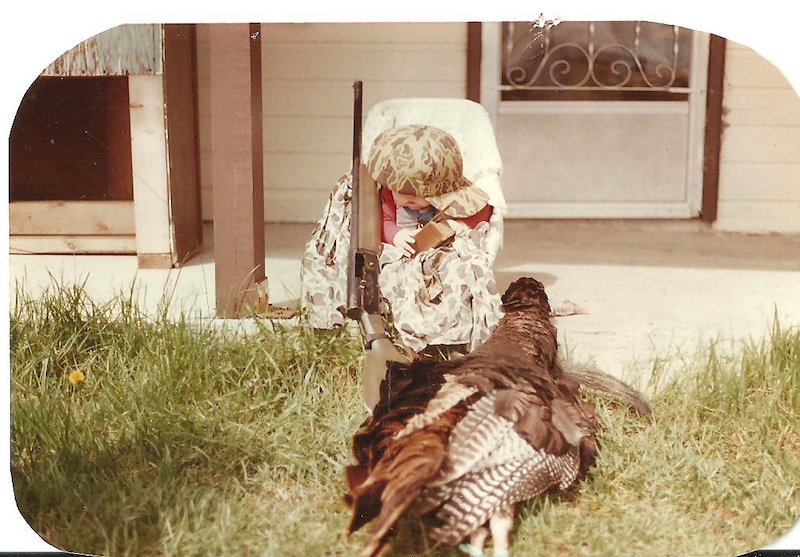
My grandpa would pick me up after school for quick rabbit hunts in his trademark overalls. We could hit half a dozen different properties in an afternoon in those days. My grandpa had permission on half the county it seemed. Pointing to some fresh rabbit scat, he turned the hounds loose and in no time the woods came to life with the rhythmic bugling of excited beagles.
The continuation of that same survey of hunters in the United States showed that in 1991, just over 14 million people hunted. Between 1960 and 1991 the U.S. gained about 80 million people. That means the percentage of Americans who hunted fell to about 5.6 percent. In other words, it was half of what it was three decades prior.
Today my grandpa is no longer around, and the woods are a lot quieter. When we lost him, we also lost permission on most of our properties we could hunt on. Much of it has since been developed. Without the same access, my small game hunting shifted to hunting more for deer, turkey and waterfowl. What I used to do quickly after school now takes planning, preparation and often some travel time.
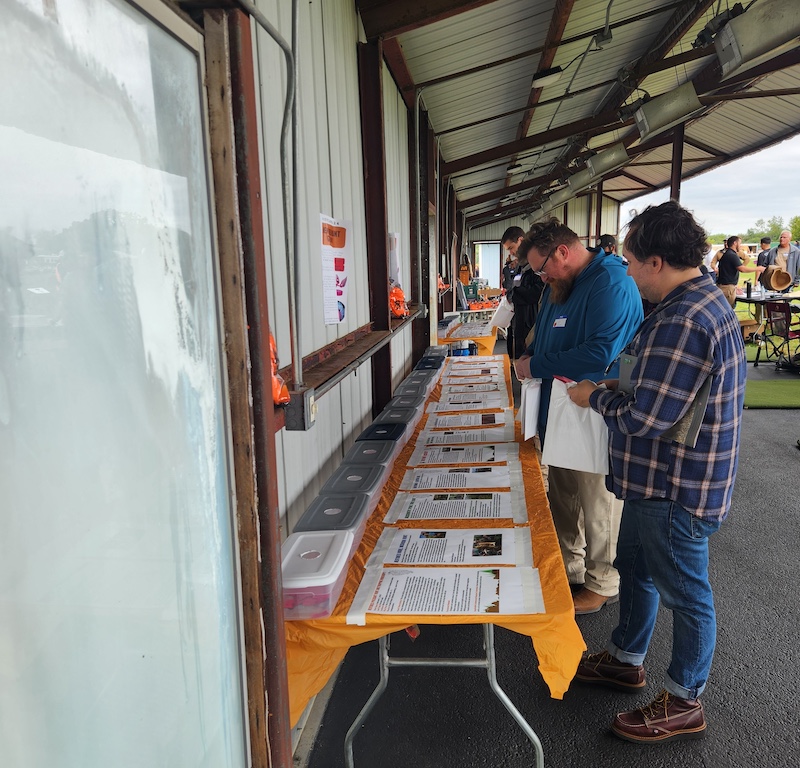
The most recent survey released by the U.S. Fish and Wildlife Service was completed in 2022. In that year 14.4 million Americans went hunting. That was just a tad over 4 percent of our total population. To put that into perspective, 5 percent of Americans are considered “wealthy,” making over 330K annually.
Hunting and what a “hunter” is are changing. Once a local thing you did after or before work with your friends or family, the loss of habitat, or at least permission on it, has shifted hunting away from the hunter. Representing a smaller portion of the population than the wealthy, hunters are desperately trying to keep pace with their grandfathers when it comes to keeping up with wildlife management and conservation.
The challenges that face today’s hunter may not be greater or lesser than those faced by hunters in my grandpa’s era, but they certainly are different. I think in amongst these challenges there exists an opportunity. If what constitutes a hunter shifts, the act of hunting might just appeal to a larger crowd. Everyone is looking for fun new adventures to plan and hunting certainly provides that.
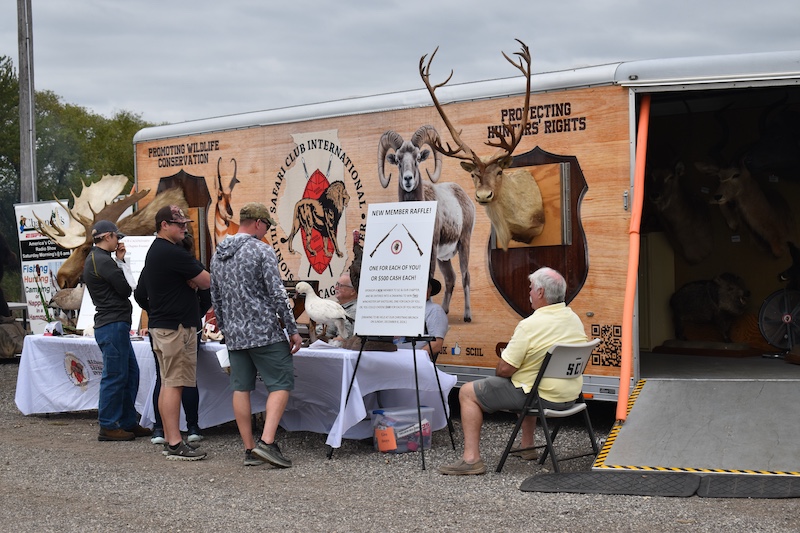
Not being the easiest thing to just break into from scratch, programs like the one I work for – the Illinois Learn to Hunt Program tries to find those folks who would like to hunt but need some assistance getting started. Even if you get past the regulations and finding a spot to go, you still need to know how to use a call, process and cook game, and read a map. We are here to help with all of that and more.
We even created an event just for those folks who are just getting into the outdoors. It’s called Illinois Hunt Camp and it’s a one-day social networking and professional development workshop for new hunters in Illinois. Hunt Camp has everything a new hunter could want, and this one is made specifically for adults.
There are skills stations set up where folks can work on stuff like map reading, remote scouting, waterfowl identification, mammal trapping and gun dog training. Many of the most active outdoor groups in Illinois are at Hunt Camp to tell you about their organizations. You can learn about Pheasants Forever, the Safari Club International, Fur Takers of America, the Illinois Conservation Foundation and more.
If all that professional development doesn’t pique your interest, you have the chance to sample several wild game dishes. We have two different wild game sampling sessions built into Hunt Camp with one being an Iron Chef style competition where you can vote for your favorite dish featuring wild game and foraged foods.
The most popular part of Hunt Camp is usually the end when all the prizes are given out. We gave out more than 50 mentored hunting opportunities to adults in 2024. We list all the hunts out on cards describing the when/where/how and what you will need and Hunt Camp guests can decide which hunts they want to try to win. If you are past the point of needing mentored hunts, there is also an outdoor gear prize table filled with useful gear anyone would be happy to win.
All this and the early bird ticket price is just $10 through the close of Illinois State Fair on August 17, 2025. That includes everything, the food, education, games, wild game sampling and prize tickets. Hunt Camp is not an event to raise money; it is to raise social capital amongst hunters and welcome new hunters and trappers into the outdoors. There’s no way to buy any more prize tickets at Hunt Camp; everyone here gets an equal shot.
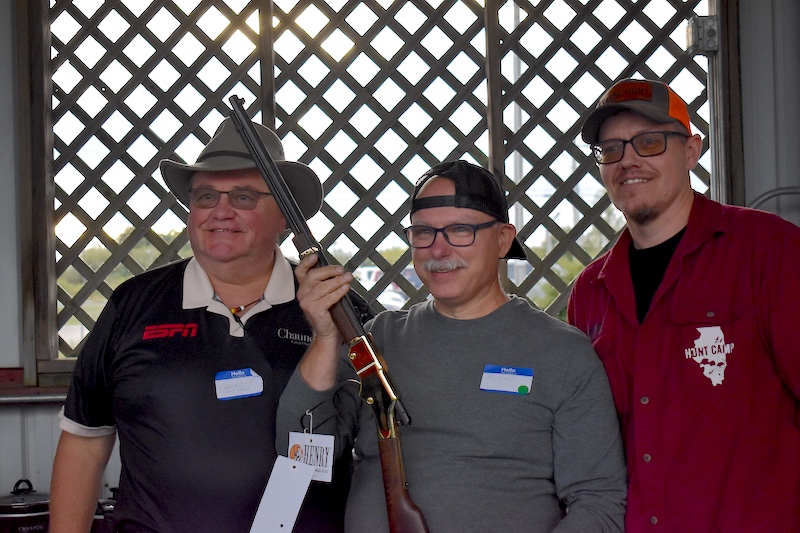
If planning some hunting adventures sounds like something you would like to try out, consider joining us at Illinois Hunt Camp on Saturday, September 27, 2025. We will again be at Deacon’s Restaurant and Bar in Wauconda starting at noon and wrapping up around 5. This event is made with you in mind, and we think you will have a good and memorable time. One thing is for sure, Hunt Camp won’t look like any other outdoor event you have been to.
What a hunter looks like might be changing, but it might just be an image that appeals to a broader audience. We are here to help if that sounds like you!
Surveys on hunting and outdoor participation from the U.S. Fish and Wildlife Service Digital Library found here:
National Survey of Fishing, Hunting, and Wildlife-Associated Recreation (FHWAR) | U.S. Fish & Wildlife Service
Curtis Twellmann has been with the Illinois Learn to Hunt program since 2020. Growing up in north-central Missouri, Twellmann hunted, fished and trapped from an early age. This led to a wildlife degree from Northwest Missouri State in 2012. From there he worked as a field biologist for the better part of a decade in Nevada, Nebraska, Texas, Alaska and California. Then he spent about three years as the Assistant Furbearer Specialist in Wisconsin before starting with the Illinois Learn to Hunt program.
Submit a question for the author